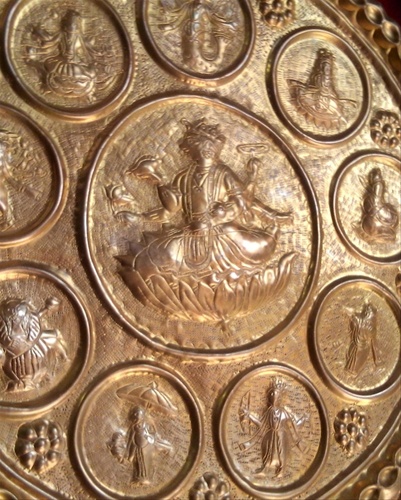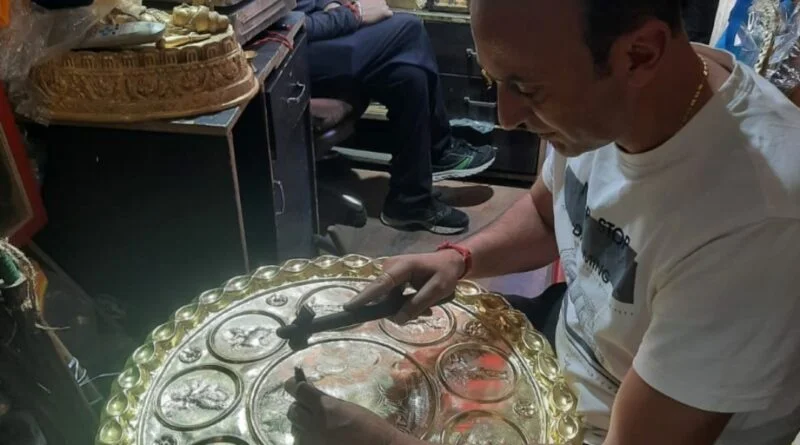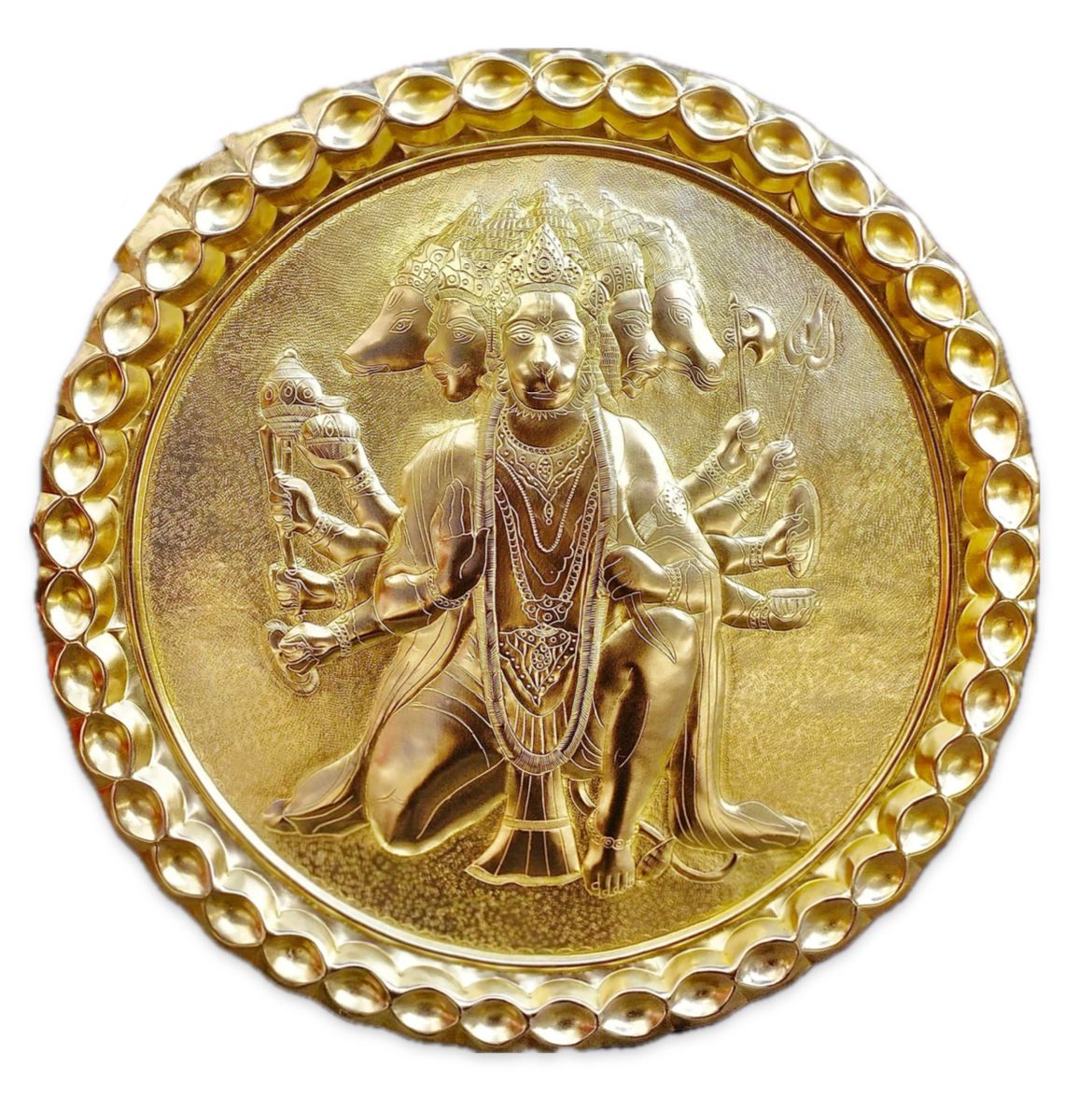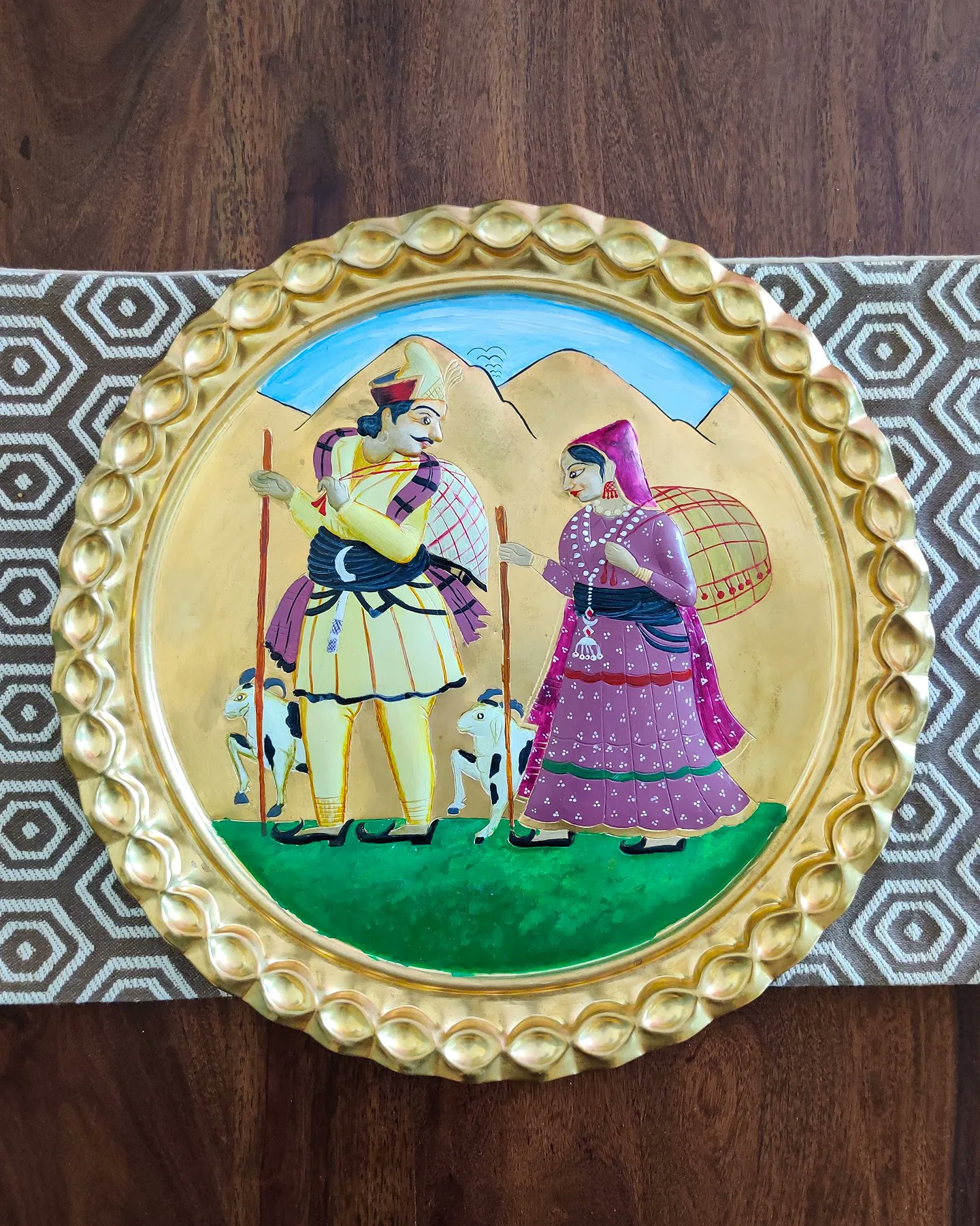Metalwork is one of the significant artistic craft of India and is a medium of showcasing elaborate design, symbolism and regional identity. Each tradition of metal craft has its own distinct identity, rooted in local culture and nature. The town of Chamba is known for its craftmanship especially for their ceremonial plates called the Chamba Thaal. They were made from brass or copper plates, characterised by their fine impressions, motifs and ritualistic significance. This artistic craft is one of the examples of traditional metal work not only in Himachal Pradesh but across India. The finely engraved plates were originally created for temple rituals and offerings and over the period of time were used for wedding, local festivals and household use. They are not only a functional object but a way of expressing the cultural identity and craftmanship.
Journey through Time
This metal craft goes back to medieval period around 10th century, the Chamba region was known for their temple construction and artistic patronage. This metalwork was influenced by techniques of Kashmir and Tibet. With the trade route and cultural interaction stylistic ideas were exchanged. Craftsmen of Chamba specialized in techniques like embossing, engraving and repousse work in making of these thaals.
The early designs were simple but as time went by these thaals began to incorporate intricate designs inspired by mythology, and nature. These plates were initially used primarily as a ritual meant to carry offerings. They were made using brass and copper which were considered as auspicious metals. Some of the thaals also had inscriptions of them documenting donating names and the events they commissioned. They are also preserved in temples and treasuries and serve as artifacts that testify Chamba artisans and craft.

One of the main reasons for this art to flourish was the royal patronage. The rulers of Chamba not only helped temple architecture but also helped to uplift metal craft, particular with making of ceremonial artifacts. By 17th and 18th centuries, Chamba became a hub for metal craftmanship, local fairs and festivals helped in promoting this craft. Thaals were also gifted during weddings and ceremonies which helped it to expand beyond its religious uses. The evolution of craft was supported by communal guilds and was passed down through generations.
Today these thaals incorporate traditional for ceremonial purposes to modern designs used as home décor keeping the art alive. It is also gone through revival with the initiatives by state handicraft board, cultural festivals and exhibitions. Institutions like Himachal Pradesh State Handicraft and Handloom Corporation has also helped to sustain this craft by offering training programs and support to artisans.
Process
The techniques of making of the thaal is passed down the generations of metal artisans. The process begins with selecting flat sheet of brass or copper which is then cut into circular shape. Then is is hammered to achieve a concave form which is the characteristic of the thaal. Once the surface is polished, the artisan then prepares for the nakashi or engraving. The design is then is drawn freehanded or by using stencils in the modern context. These motifs are chiselled by engraving tools, or by repousse work where the metal is hammered on the reverse side to raise the designs. After engraving the plate is polished which bring out the fine work of the motifs.

Motifs

1 Floral Pattern : One of the common motifs to appear in these thaal is lotus. Lotus aligns with both Hindu and Buddhist iconography as these influences are seen in this region. Creepers and rosettes are also added around the lotus for decorative balance.
2 Mythological Characters : Some of the thaals are engraved with images of Shiva, Vishnu or local deities. Symbols such as trishul and kalash are also seen to bring in the devotional aspect.
3 Animal Figures : Animals such as elephants and peacocks are engraved which symbolises strength and beauty respectively. Fish is also a common motif which symbolises abundance.
Challenges faced
Despite the artistic legacy and cultural significance, this craft faces challenges in the modern times. While the thaal is known for its cultural heritage it is still not known by a larger audience. Tourists come to know about this craft when they are specifically guided by the locals. Another reason which is also faced by other artwork is the decline of skilled artisans. The younger generation is reluctant to pursue the craft and prefer other occupations. As a result, there is risk for the traditional techniques to continue. Mass production and industrialization also challenges the value of handcrafted genuineness. With the changing religious practices, the demand for the thaals have declined.
To address these issues collaborative efforts are to be taken by the cultural institutions and local communities. Expanding market visibility through fairs, exhibition and online platforms should be done to help with generating awareness about the craft. Community engagement is necessary to ensure the continuity of the thaal in today’s world.

Conclusion
Chamba thaal is more than just than metal artifact but legacy of royal patronage and artistic abilities. Each of the thaal is crafted by the artisans which tells the stories of rituals, beauty and culture. These ceremonial plates represent more than just utility but the aesthetic and cultural abilities of Chamba region. What makes this craft truly remarkable are the intricate motifs engraved as a part of the identity of Chamba connecting them to its past. The craftmanship is not technical but creativity and function of beauty.
The thaal does faces the challenge to continue but with the right supports in training, marketing the art can establish its place in contemporary times. To revive this art, is not the only responsibility of artists and institutions but a collective responsibility to support handcrafted products and raising awareness about this craft. Ultimately preserving this craft is not only saving the art form but honouring the legacy and connection between art, spirituality and tradition.

References
https://himachalee.com/chamba-brass-thaal-metal-craft/




